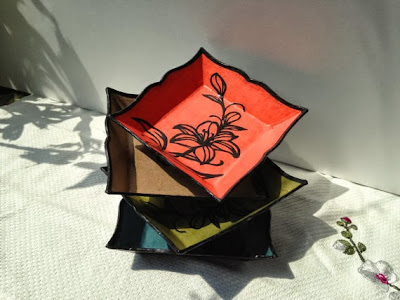When selecting designs for my Hanji pieces I tend to make stylistic choices as to what will look best on each piece but the Korean designs all have very deep symbolic meanings. None more than the Buddhist swastika (manja) design. ‘Manja’ (만, Man is “卍” and 만자, Manja literally means “letter Man”) is also called Srivatsalksana in Sanskrit. It is one of the thirty-two (32) marks of excellence of the Buddha and is said to exist on his hands, feet, hair and waist. For those of us in the West this is often confused with the German Nazi swastika symbol but in fact it's been around for about three thousand years. The swastika is an equilateral cross with arms bent at right angles and all in the same direction, usually to the right, or clockwise. It's a symbol of prosperity and good fortune and it originally represented the revolving sun, fire, or life. The word swastik...

Comments
Post a Comment